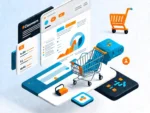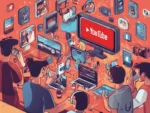Sending marketing emails at just the right time to maximize opens and click throughs can prove challenging for companies who are continually looking to optimize their marketing prowess, as there are a host of different factors at play when determining the best time to send emails as well as the best context within which to operate. With click-to-open rates to consider, bounce rates to agonize over, and the perfect time feeling elusive and out of reach, how do companies guarantee that their email marketing campaigns are actually reaching their audience at the perfect time?
I have put together some of the most up-to-date research on the subject, best practices on implementation, and practical tips to tackle email marketing and drive engagement. First, let’s take a look at the factors that influence optimal send times.
Factors Influencing Optimal Email Send Times
Optimal email send times can make or break an email campaign. While actionable emails are a powerhouse in their own right, I have seen the benefits of email marketing optimized according to send times and effective audience segmentation. From B2B emails to B2C emails and general marketing campaigns, knowing when to schedule or press send is a vital part of making the most of your email marketing efforts.
What do you look at, to accommodate all of the necessary factors involved in effective email marketing?
I recommend 3 umbrellas to look at first, to begin developing email metrics that can inform and optimize your marketing emails. These include recipient demographics, industry and business types, and email content and purpose.
Recipient Demographics
Recipient demographics cannot be ignored when companies are looking into the most effective time to send emails; after all, different demographics will respond to emails differently, and high-quality content worth its salt will take those demographic differences into account. When looking at demographics, take age, occupation, and location into consideration and segment your audience accordingly.
Age Group
Different generations have different email habits. For older generations, for instance, email may not be checked as frequently, or may not be checked first thing upon waking. Younger generations may be more likely to scatter email checking throughout the day and have an ongoing relationship with incoming emails. These demographics can significantly inform your email marketing practices.
Occupation
Work schedules can impact when emails are read, and how much attention is given to them when they are read. As you go through your audience demographics, make sure you are taking the challenges occupation can have on email opens into account.
Location
For obvious reasons, location can have a dramatic impact on the success (or failure) of an email marketing campaign. If, for instance, your audience is not segmented according to time zones or the cultural norms associated with a location, you risk seeing your emails get sent straight to the trash folder, rather than being opened and having a high click-to-open rate.
Industry and Business Type
The industry you are in, and the type of business both you and your audience are in can also inform how you go about developing an email campaign. B2B companies are going to go about advertising through emails in a way that deviates from a standard B2C business. The behaviors of a business and the behaviors of a consumer are not synonymous, so campaigns have to be structured accordingly.
Specific industries may employ unique email patterns. In my own industry, there is some variation in patterns and habits, but other industries might be more rigid regarding patterns and timing. Consider the unique behaviors and habits associated with specific industries to yield the best results.
Finally, consider the products and services being offered; the type of products or services being marketed in your emails will influence recipient engagement. If you do not adequately identify a need and present a way to fill that need, your audience is not likely to engage with your email. Determine how to most effectively leverage your products or services to positively influence your email engagement rate.
Email Content and Purpose
The content and purpose of your emails will also influence the timeline in which they are sent. A promotional email, for instance, is likely to contain time-sensitive offers and needs to be sent out within a narrow window to ensure that codes and offers are active for long enough to generate sales. A newsletter, conversely, is likely to be a highly flexible piece of content that primarily focuses on delivering information or educating your audience. Transactional emails typically require immediate delivery, and also require careful timing.
General Best Practices for Email Send Times
I have walked through the basics of email marketing, and how timing and demographics impact marketing email decision-making, but a close look at best practices is still important when developing your email marketing strategy. From the day you send out emails to the time of day you send your emails, there are specific practices that are generally recommended for prime email marketing performance.
I typically divide best practices into three segments: weekdays vs weekends, specific times of day, and specific days within the workweek. First, let’s take a look at weekdays vs weekends.
Weekdays vs Weekends
Surprisingly, it is in your best interest to schedule emails on weekdays. While it might seem as though weekends are better for personal emails, metrics show that this is not actually the case; weekdays have higher open rates overall.
If you do choose to send emails over the weekend, note that this is likely a good strategy for B2C companies rather than B2B companies. Weekends are also ideal for entertainment-related emails and emails that promote leisure or personal preferences.
Is Your LinkedIn Working?
Just released: my new book to help professionals, entrepreneurs, and business owners maximize LinkedIn for real growth.
With years of LinkedIn expertise, Maximizing LinkedIn for Business Growth offers actionable steps to build your brand, expand your network, and drive results.
Start leveraging LinkedIn like never before—grab your copy now! Click the cover or button below to buy on Amazon.
Knowing that there are potential benefits to both, consider testing both weekdays and weekends to determine the best fit for your audience. Your email recipients will more effectively determine the direction of your campaigns than generalized information, so don’t be afraid to play around once you have the basics of your campaign mapped out.
Time of Day
Identifying which time of day is best for your audience will depend largely on what your audience expects from you, and the demographics and characteristics of your particular audience (or audience segments). Send times are typically divided into 6 segments, including morning, mid-morning, afternoon, late afternoon, evening, and late night.
Morning (6 AM – 9 AM)
Morning emails are great for segments that are up and at ’em early in the day. A morning email catches recipients at the start of the day, and keeps you top of mind upon waking. They may not be great for demographics that sleep later, or those that are unlikely to check their phones or emails first thing upon waking.
Mid-Morning (9 AM – 12 PM)
Email newsletters and marketing materials sent out at mid-morning are often ideal for B2B audiences and office workers, as these emails are received during peak work hours, and around lunch time–both times that are likely to include checking emails.
Afternoon (12 PM – 3 PM)
Afternoon emails are great for B2C transactions, and occupy some of the lunchtime lull that can occur between these hours. Email blasts at this time of day can also catch parents waiting in school lines to retrieve their kids, and can be a useful period of time in which to target parents and professionals, alike.
Late Afternoon (3 PM – 6 PM)
Emails sent during this time are hoping to capitalize on the end-of-workday mindset. Propositions and newsletters being sent to email subscribers may want to focus less on work-related products, services, or content, and focus more on leisure, activities, or relaxation. This can be a great time for marketing emails that involve some degree of escapism.
Evening (6 PM – 9 PM)
During this period of time, emails are also likely to be best received if they are not transactional emails, or they do not heavily involve work or work-related items. A B2C audience during this time, for instance, might be interested in opening something from their personal email that appeals to certain lifestyle considerations, or provides escape via entertainment, future planning, and more.
Late Night (9 PM – 12 AM)
This is a highly particular niche, with certain demographics that are more active. Younger audiences such as college students, people who work swing shifts, and people with certain lifestyle preferences may be more likely to fall into the likelihood of a late-night email actually functioning within optimal send times.
Day of the Week
When trying to determine the precise day on which you will send out your marketing emails, consider the different tones and ideas typically associated with each individual day. Think of this this way…
Monday emails are being sent out as recipients are easing into the week. They may be in planning mode, or may be looking to maximize productivity as they head into a fresh workweek.
Tuesday, Wednesday, and Thursday emails are coming in on peak productivity days. The perfect email for these days will recognize the value of productivity, and may be best reserved for tools or products that capitalize on the desire to get things done.
Friday emails will be flooding inboxes during a winding-down period, or a time when many recipients are looking forward to the weekend. Leisure activities, hobbies, and other lifestyle and unneeded (but wanted) items are perhaps best delivered on Fridays.
Saturday and Sunday emails are looking for audience engagement on relaxed days, where people are engaging in leisure time, are online shopping or browsing, and are looking for ways to prolong their enjoyment of down time.
No one day is definitively better than the other! Instead, you can leverage the tone of each day to correspond most effectively with what your emails contain.
Industry-Specific Email Send Time Insights
Now that I have covered the basics, let’s take a closer look at some industry-specific insights that can help spur the success of email marketing campaigns in specific industries. B2C companies, ecommerce and retail enterprises, media and entertainment groups, and financial services all possess different insights regarding email timing and preferences.
B2C Companies
Optimal email times will vary based on the category of the product or service, but generally, weekday evenings and weekends perform well. Experiment with the 12 PM – 2 PM and 6 PM – 9 PM time slots, as these are historically the best time slots for B2C companies.
Ecommerce and Retail
Ecommerce and retail emails show high engagement and Thursday and Friday evenings for general ad copy and email content. Sundays are stronger for weekly promotions and deals, as they signal what can be expected of the week ahead. Mondays are best avoided for this particular segment, as Mondays are often a time of focus on work and productivity, rather than retail.
Further Reading: 9 Killer Ecommerce Email Marketing Strategies for Maximizing ROI
Media and Entertainment
Weekday afternoons and evenings are the most effective times to send emails containing media and entertainment news and products. Weekends also have high open rates, with a particular focus on Sundays. These types of emails are most effectively sent and well-received when they are segmented by type–think news, sports, music, etc.–for precise targeting.
Financial Services
Financial services emails typically perform best on weekdays, with an emphasis on Tuesday and Thursday. For these emails, marketers are best served by sending emails in mid-morning (10 AM) to early afternoon (2 PM). Try to avoid weekends and Mondays in the Financial sector, as emails do not typically perform well on these days.
Optimizing Send Times with Email Automation
Email automation can help optimize send times, as well. Rather than sitting at a computer, and painstakingly sending emails across different time zones and to different segments, you can segment email lists based on user preferences and behaviors, and utilize time zone targeting to deliver emails at optimal times worldwide.
Automated email sequences can also be used for onboarding (think welcome emails), abandonment (“We’re sad to see you go!” emails), and more, in order to stay on top of your email lists and conserve time and energy. A/B testing can also be conducted using automation services, to evaluate different send times and measure results to more thoroughly inform your email marketing strategy.
Analyzing Your Email Performance Data
You’ve made it this far: you’ve put some experimental emails in place, you have developed your email marketing strategy, and you’ve taken steps to make sure your emails are performing as well as possible. What next?
Once you have an email system established, you can begin analyzing your email performance data to further optimize each of your email lists and segments, and ensure that your emails are reaching your target audience and leading to conversions. To accomplish this, make sure you are monitoring key metrics, and making data-driven adjustments to your strategy.
Monitoring Key Metrics
Monitoring key metrics will help develop an email marketing strategy that continually works for you, and evolves as your audience evolves. Using metrics, you can track open rates, CTRs, and conversions for each email campaign, and adjust your approach accordingly.
You can also use these metrics to compare performance across different send times and days, and look for any patterns and trends specific to your audience. As you uncover trends and data points, you can adjust your emails to more effectively capture your audience’s attention and drive sales.
Making Data-Driven Adjustments
As you develop your own adjustments based on data, focus on key changes; namely, top-performing send times and trends. When you identify the send times that consistently out-perform others, prioritize those slots, without eliminating other times entirely.
By experimenting with underperforming times, you can effectively rule out anomalies, and continuously refine your approach.
Best Time to Send Emails: Research-Backed Insights
Although you should not minimize the power that comes from utilizing your own data-backed insights to ensure optimal email marketing efforts, there are plenty of companies who have done some of the heavy hitting for you, and have put together valuable insights regarding email marketing.
I have utilized some of these insights, myself, and consider the following data points useful jumping-off points for my own email lists.
Campaign Monitor

Campaign monitor’s most recent analysis utilized over 100 billion emails sent by their subscribers, to create a robust window into the habits and practices of email subscribers. The analysis concluded the following:
- Open rates were highest on Thursdays.
- Unsubscribe rates were lowest on Sundays and Mondays.
Another analysis, conducted a few years earlier, determined that Tuesdays had the highest open rates for advertising/marketing agencies, travel, marketing and leisure activities; Wednesdays had the highest open rates for healthcare services, food, and beverage industries; Sundays had the highest open rates for the education industry. These insights can help further segment email lists and improve open rates.
GetResponse

GetResponse also conducted a study to evaluate email marketing benchmarks, and determined that clicks and open rates were higher on Mondays and Tuesdays; that being said, however, the click-to-open ratios were consistently higher on Saturdays and Sundays.
The results?
GetResponse recommended sending one email in the early morning (as early as 4-6 AM) and another in the late afternoon (5-7 PM) to take advantage of optimal engagement.
Further Reading: 8 Personalized Email Marketing Strategies You Don’t Want to Miss (with Examples)
HubSpot

HubSpot published their 2023 wrap-up regarding marketing emails and engagement. Their surveys determined that the highest engagement levels occurred between 9 AM and 12 PM and again from 12 PM to 3 PM. The days reported to show the most opens and clicks included Tuesday, Monday, and Thursday, with 27% of marketers identifying Tuesday as the best engagement day, followed by 19% for Monday, and 17% for Thursday.
Hubspot’s numbers were further broken down by the business model being used. 47.9% of B2B marketers reported seeing the largest amount of engagement between 9 AM and 12 PM. This was mirrored by B2C marketers, as 30.9% of B2C marketers reported the most engagement during those same hours.
Omnisend

Omnisend reported on email marketing, and determined that 8 AM emails had the highest open rate (20.32%), and a high click-through rate of 7.79%, making it a great time to send out your marketing materials. 10 AM emails, too, yielded high open rates, but a lower number of orders when compared to other times. 1 PM was found to be a “great all-rounder time,” while 4 PM had the highest order rates, and 5 PM had high click-through rates.
Klaviyo

Klaviyo’s entry into 2023 email marketing stats found that the highest open rates occurred on Mondays, Tuesdays, and Wednesdays. Interestingly, Klaviyo reported that although open rates are lowest on Thursdays, they produced the highest amount of revenue when compared to other days.
Further Reading: 8 Best Email Marketing Best Practices for 2025
Brevo (Formerly sendinblue)

Brevo found two good times to send emails: right at or around 10 AM and between 3 PM and 4 PM. 10 AM scored high for both open and flick-through rates, there was more variation between 3 PM and 4 PM. Click-through rates on their own were high around 6 PM, and sometimes even veered closer to 7 PM.
Brevo also broke down the best times by industry, determining the following:
- Ecommerce: 10 AM
- Software/SaaS: 2 PM – 3 PM
- Marketing Services: 4 PM
- Hospitality/Online Retail: 8 AM – 10 AM
- Professional Services (B2B): 8 AM – 10 AM
- Nonprofits: 3 PM – 4 PM
Using this guide, you can break down your own metrics according to your industry.
Further Reading: The 18 Best Email Marketing Software Tools to Consider Investing in Today
Intercom

Intercom gathered data to determine the best email send times, and found that email open rates were highest between 10 AM and 11 AM. They took their data sets a bit further, however, and made additional recommendations regarding when to (or when not to) send marketing emails. They urged readers not to send emails outside of business hours without reason, to send emails before peak opening hours if you want them read quickly, and to disregard timing for in-app messages in favor of traditional emails.
In-app messages are well-received any time during office hours, though the hours between 10 AM and 2 PM were considered best.
Salesforce

Salesforce deviates from most of the advice given above, instead opting to encourage readers to develop their own path based on insights unique to them. From considering the recipient’s local time zone to using automation and personalizing send times to achieve the best results, Salesforce encourages using individualized approaches rather than mining data and making large-scale suggestions.
Moosend

Moosend’s analysis updated for 2025 indicates that Thursdays have the highest open rates, followed by Tuesdays. Both demonstrate a high open rate between 8 and 9 AM, with the lowest rates coming after 6 PM. Moosend also broke recommendations down further according to industry and market.
Key Takeaways for Mastering Email Send Times
An email marketing campaign is only as effective as the data it is predicated on, so make sure that you understand your audience demographics, behaviors, and preferences; after all, if your email marketing strategy is not built upon the wants and needs of your target audience, what is holding it up?
In addition to mastering send times, make sure that your email list is segmented for targeted and timely delivery. Properly segmenting your emails can help make sure that you are optimizing your send times, your content, and even the times throughout the week or month that you send your content out.
Once you have properly segmented your target audience, you can move on to automation tools. Automation tools significantly improve the efficacy of your scheduling practices and increase the efficiency of promotional emails and other forms of email marketing. Automation tools are frequently also equipped with optimization tools, in order to make sure that your email blasts are keeping up the conversion rates you require.
As you build your email marketing practices, make sure that you continuously monitor, analyze, and adjust your practices (think subject lines, email size, email topics, and more) based on your performance data. Metrics are great at pinpointing the ideal time according to audience segmentation, so make sure you are keeping up with those metrics and making changes accordingly.
The steps identified above will allow you to test and experiment with email marketing to find the sweet spot for your unique audience and offerings.
Further Reading: 17 Best Free Email Marketing Services to Check Out
Conclusion
Although email marketing has been around for many years, there can still be a learning curve as you figure out the schedule that will work best for your marketing campaigns, and adjust to suit your audience’s preferences as your metrics come in and you begin to identify trends. By combining the data put forth by numerous companies and the data you gather from your own audience, you can effectively leverage email marketing to reach your audience, improve engagement, and drive sales.
Do you have a well established email marketing routine? Let me know in the comments!











